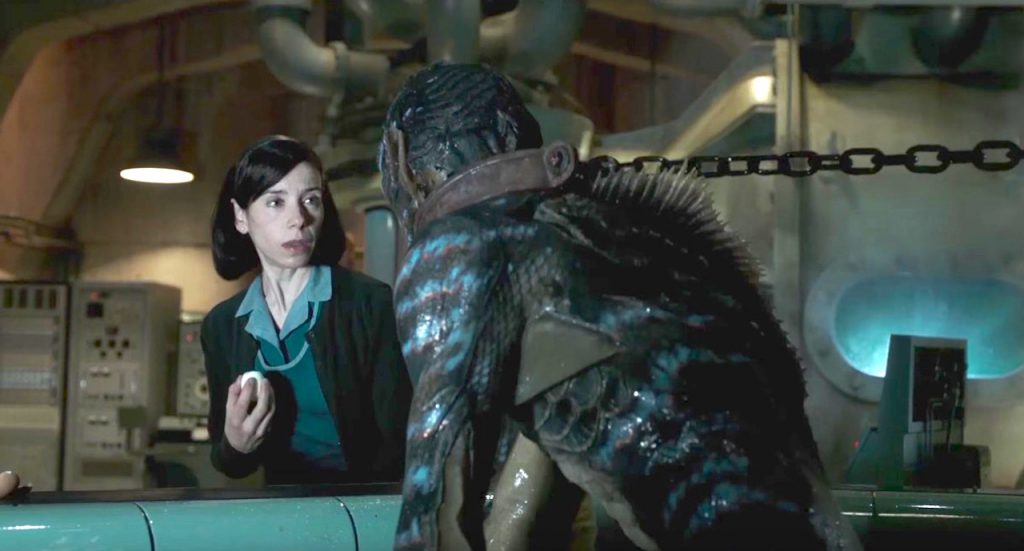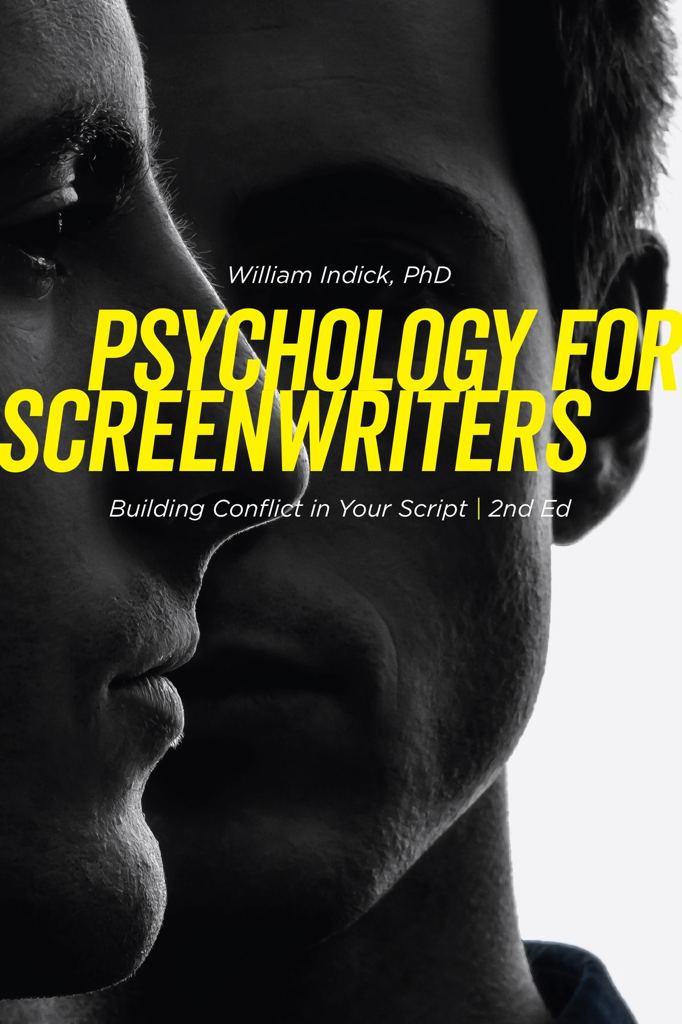Psychology professor William Indick was teaching theories of personality when he realized his students simply weren’t getting it, so he started doing film analysis in his classes to explain these dense topics with examples from the silver screen. This led to a handful of books including Psychology for Screenwriters, Movies and the Mind, Psycho Thrillers, and Ancient Symbology in Fantasy Literature.
“I wrote a book about film analysis and then I flipped it. Instead of analyzing films, I took these ideas from films and project them onto screenwriters. You can use these techniques other filmmakers use in your films to make more psychologically complex characters.”
These books are meant to showcase an art rather than a science. “Analysis is an art. It’s the art of interpretation, so there is no truth in analysis. Psychologically is largely a philosophical field, so the attempt to make it scientific has merit, but those merits are not apparent in the filmmaking process.”

William Indick
Indick’s first book, Psychology for Screenwriters, is about to have a 2nd edition published. “The first edition was about taking these classic theories — from Freud, Erikson, Jung, Campbell, Adler, May — and applying these to the process of screenwriting.” Each chapter uses films to explain psychology.
Symbolism and Guillermo del Toro
Of the three genres covered in the new edition (fantasy, science fiction, and western), two of the films Indick chose come from writer-director Guillermo del Toro. “It wasn’t an accident. We were thinking about doing a Spanish edition, but his movies are very, very psychologically complex. You have to see them to believe them.”
“In every single frame, there’s some sort of psychological symbolism. There’s something going through your senses, through your eyes, into your unconscious mind, that’s not being processed on a conscious level. Like all great filmmakers, he’s aware film is a visual medium and you express a lot of symbolism in very little material.”
In The Shape of Water, for example, an egg represents the protagonist and her relationships with the Amphibian Man. “Del Toro uses an egg to represent Elisa Esposito (Sally Hawkins). It’s subtle until you notice it, then it’s not subtle at all. That’s the thing about psychological symbolism. For the most part, it goes unseen, but that egg keeps reappearing.”
In the movie, Elisa uses an egg timer in one scene. In another scene, she feeds the Amphibian Man eggs. “She’s very fragile, very small, she can’t speak, and she’s fragile like an egg. But the more the film goes on, the harder she gets like an egg being boiled. By the end, she’s the strongest person in the film.”
“The egg represents that. The egg represents the self. It represents a sphere of development. There’s lots of wonderful symbolism in that one little thing. It’s in the script, but not obvious. For mass appeal, it’s completely unobvious, but it’s all there and it has a subconscious effect. There’s something they’re linked to that they’re connecting with and they might not even understand it themselves.”

Elisa Esposito (Sally Hawkins) & Doug Jones (Amphibian Man) in The Shape Of Water
“Ultimately, we’re all narcissists. When we look at media, we’re trying to see ourselves, but we’re not aware of that process. We don’t like to admit that we’re narcissist. But when we see a film and there’s something that gets to us, we don’t understand, but it’s ourselves — our reflection. That’s the tick with the crystal ball. It’s not another dimension, but a mirror.”
When to Add Symbolism
Indick would say that all writers have a different process, so the idea of coming up with symbols first or last is on a case by case basis. “One approach would be to outline the story first and then sprinkle symbolism later. Del Toro, who uses visual symbolism, probably waits for the shooting script. But I think there are some core things that come to mind.”
In Pan’s Labyrinth, the symbols are baked into the script. “You have Captain Vidal (Serge López) who is this sinister villain and he’s very much associated with time and the tyranny of time. So, del Toro puts him in a clock tower and he’s carrying a watch around. With everything he does, he looks at the clock, so that has to be written in the script. So finding a symbol to attach to each character is something he does.”
As a viewer, Indick says some creators seem to lack the appreciation for film. “Before film was a digital medium, you knew it was layer upon layer, so now it’s so quick we’re getting the image quick and there’s a rush to production that sometimes we forget the layering to make it dense, or substantial.”
“Traditionally, TV shows didn’t need depth, but now they’re competing with the film market. We’re seeing things being made more quickly and therefore can’t have that density, but then there are films from Guillermo del Toro and Wes Anderson who study the classics and take their time. All great films, though, are packed with symbolism because filmmakers want to pack the frame with something meaningful. There’s always going to be films that last ages and films that only last for a day.”

(Pedro Pascal) The Mandalorian. Photo courtesy of Disney +
Some of these stories overlap genres of course. In Jon Favreau’s The Mandalorian series, he uses the western to tell a sci-fi story. “He made it a classic western in that Star Wars was a classic western, but he made it more of a western,” said Indick. “Each [episode] is an ode to classic western films. You see The Magnificent Seven. You see The Searchers. You see all the classic archetypes in these great homages, which are new to many people who haven’t seen these films.”
Archetype vs. Stereotypes
“Joseph Campbell was not a psychologist, but a mythologist. He studied the classics and his knowledge of the classics was beyond encyclopedic, but he also studied social psychology. If you read Hero with a Thousand Faces, it’s a psychology book.”
“If there’s a hero, we don’t want to see the hero die at the end,” said Indick in regards to ignoring the Hero’s Journey. “The typical adaptation has the hero accomplishing everything he needs to accomplish and we don’t see the downfall. But you do the classical pattern in Braveheart or Gladiator where the hero dies in the end.”
Read our interview with Chris Vogler about Joseph Campbell’s theories here.
“The main thing, however, is that people in the audience have to identify with that hero on the screen. What audiences are going to identify with is going to change from generation to generation. There is a pattern, but it can’t be repeated again and again and again. An archetype is a symbol with shared meaning, but a stereotype is literally the same exact thing, over and over again.”
In addition to audiences not wanting to see the same stereotypical characters over and over again, modern audiences are now looking for more diversity in characters. And, this creates more sympathy in audiences as Indick said in a previous interview: “Film gives us the opportunity to put our minds in the brain of another person, and also try to understand people through that person’s eyes.”
For writers who want to make their characters more complex, the author would recommend expanding beyond your hubris. “Writers have a hubris that they know everything in their head and they just need to get in touch with that, but there’s a lot out there to get in touch with. I’m not a huge consultant, I’m a professor, but every once in a while someone reaches out to me and I realize their knowledge of that genre is nil. They haven’t seen many of the movies in that genre.”
“What I would encourage is for students to watch really good movies and take notes. There’s a difference in viewing and analyzing—really watching it. Pause, look in the frame, identify the symbols, and break it down like a piece of literature or a painting. Study first, then write. Watch The Searchers, then watch The Mandalorian. Then it’ll come out in your work. There’s no such thing as copying. It’s an homage.”
This interview has been condensed. Listen to the full audio version here.

